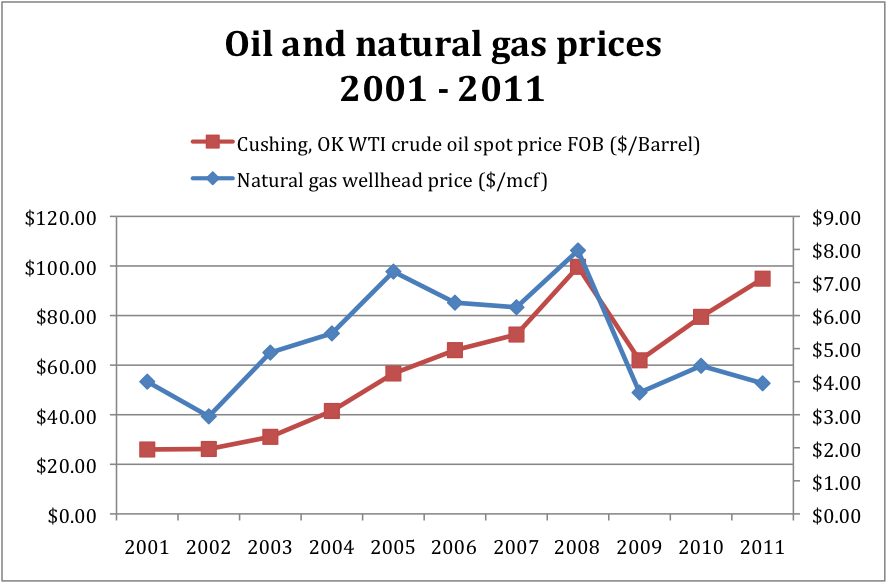With less than three weeks to go before Election Day, the rhetoric around gas prices and drilling is heating up at campaign events around the country. The issue was also front and center in Tuesday night’s presidential debate.
Predictably, data about oil production on federal lands and its effects on gas prices is being spun and twisted to fit a range of agendas. While the data shows that industry interest for drilling permits has moved away from public lands to private lands – there is a simple explanation for the shift that industry lobbyists and PR pros aren’t telling you. Drilling companies go where the most profitable resources are, and today that means shale oil, the vast majority of which is under private lands.
We want to help the public by laying out the hard facts about oil production on federal lands and its impact on the price at the pump (or lack thereof) so that the next time there is a sound bite or lofty rhetoric, the public knows the truth.
Here are seven things to you need to know about oil production and drilling on your public lands.
1. Oil production is at its highest level in eight years.
Despite the conventional wisdom spun by industry and on campaign trails by Big Oil politicians, the U.S. is the world’s third largest oil producer. In fact, domestic oil production is at its highest level in eight years.

Source: “U.S. Field Production of Crude Oil,” Energy Information Administration, accessed 18 October 2012.
2. The vast majority of shale oil and gas resources are found under private and not public lands.
The latest oil boom in the lower 48 states is due largely to an unconventional resource known as “shale oil,” (oil trapped within shale rock). The vast majority of both “shale oil” and “shale gas” (natural gas trapped within shale rock) is found under private and not public lands. The location of these resources, not safeguards for air and water, explain the shift in drilling from public to private lands.

Source: Adam Sieminski, Testimony of the Energy Information Administration, U.S. House, Subcommittee on Energy and Power Committee on Energy and Commerce, 2 August 2012.
3. Natural gas prices have plummeted, while oil prices have rebounded since 2008.
The major factor driving whether a rig drills for oil or natural gas is price. Most of the energy resources under federal public lands are natural gas. As we saw above, most shale oil resources are under private lands. Given that natural gas prices plummeted and oil prices have rebounded since 2008, there is a strong incentive for drill rigs to move from public to private lands.

Source: “Cushing, OK WTI Spot Price FOB,” Energy Information Administration, accessed 18 October 2012.
“U.S. Natural Gas Wellhead Price,” Energy Information Administration, accessed 18 October 2012.
4. Despite the fact that most shale oil resources are under private lands, oil production was higher on public lands in 2011 than it was in 2007.
One would of course expect oil production to skyrocket on private lands, but oil production has also increased on public lands by about 19,000 barrels per day.

Source: Marc Humphries, “U.S. Crude Oil Production in Federal and Non-Federal Areas,” Congressional Research Service, 20 March 2012.
5. More oil production from public lands will not affect the price at the pump.
The Associated Press found that “[g]as price spikes have had little to do with the level of oil produced in the United States.” This is because the price of oil is set on a world market, and increasing demand from countries such as China and India is raising the cost of oil. So, drilling companies make more money drilling for oil when prices spike, but it won’t lower the price at the pump.
Click the snapshot below to view the Associated Press’s interactive chart on their website.

6. The U.S. Bureau of Land Management continually approves drilling permits faster than the number of new wells industry develops.
Critics often point to declining permit numbers as proof positive that the federal government is blocking development, but the facts tell a different story. Industry is submitting far fewer permits to drill on public lands because of the shift from public lands natural gas resources to private lands shale oil deposits, and the federal government can’t approve a permit unless industry submits an application for it. More importantly, the federal government consistently approves drilling permits faster than industry can drill new oil and gas wells. The only thing holding back industry is industry.

Source: “Number of Drilling Permits Approved by Fiscal Year on Federal Land,” U.S. Bureau of Land Management, last updated 9 November 2011.
“Number of Well Bores Started (Spud) During the Fiscal Year on Federal Lands,” U.S. Bureau of Land Management, last updated 9 November 2011.
7. Industry is sitting on more than 7,000 federal drilling permits with a green light to drill.
Lastly, industry does not use the drilling permits that have already been issued for oil and gas development. In fact, there are more than 7,000 unused drilling permits that industry could develop on federal public lands.

Source: “Approved Applications for Permit to Drill – Not Drilled,” U.S. Bureau of Land Management, 30 September 2011.






Recent Comments